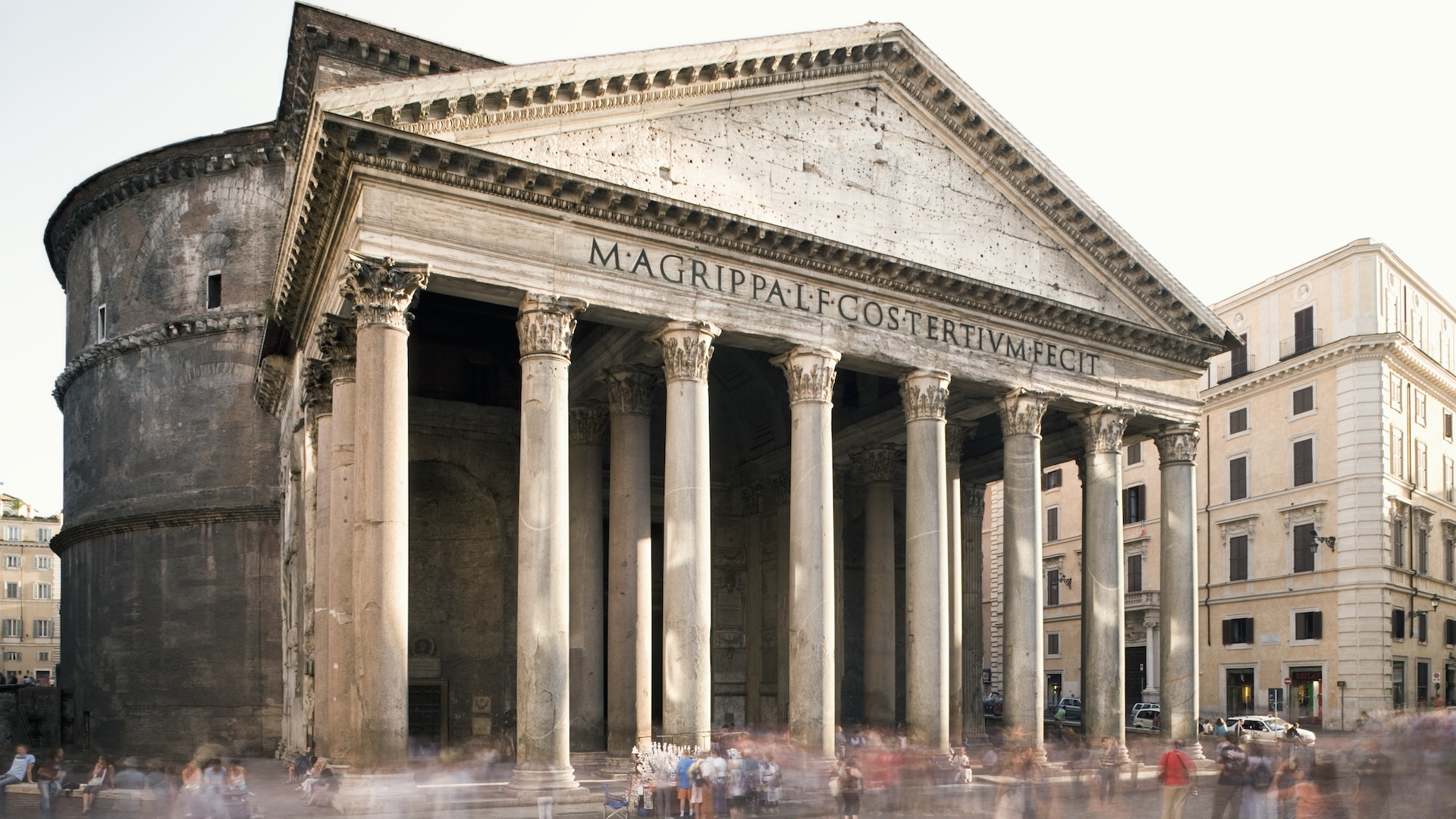When you buy through link on our site , we may earn an affiliate commission . Here ’s how it knead .
A " completely unique , " 2,000 - yr - old Romanic mausoleum that has emerged from the rubble of a development internet site in central London is the most entire ever discovered in the U.K.
The monolithic grave — of which broken wall , entrance steps and internal floor remain — is bejewel with two mosaics composed of diminished red tile , each featuring a flower enclose in homocentric dress circle . More than 100 coin were also strewn across the tomb ’s floor .

Excavations revealed elaborate mosaics at the center of the monument, each featuring a flower surrounded by concentric circles.
archaeologist only found the 2nd mosaic when they dug beneath the first one . This indicates the mausoleum floor was raised at least once while it was still being used for sepulture , they read .
The find , which is nestled within the city ’s central Southwark area , " provides a fascinating windowpane into the go condition and lifestyle in this part of the metropolis in the papist time period , " Antonietta Lerz , a elderly archaeologist at The Museum of London Archeology ( MOLA ) , said in astatement .
Related : Ancient necropolis unearthed just foundation away from bustle Paris train station

Both mosaics were composed of small red tiles and featured a flower surrounded by concentric circles.
A video reconstruction of the mausoleum ’s inside break how the tomb may have been laid out and decorated duringRoman times .
Roman invaders under Emperor Claudius founded London , or Londinium , around 47 A.D. andruled the city through to the early fifth 100 , when dwindle down military resource and incursions across the rest of the empire impel their drug withdrawal from Britain .
The recent excavation bear the marks of this decline . " This comparatively lowly site in Southwark is a microcosm for the change portion of Roman London — from the early phase angle of the website where London expands and the area has extravagantly decorated Roman buildings , all the means through to the late papist period when the colonization shrinks and it becomes a more quiet space where mass remember their dead , " Lerz enunciate .

Archeologists found a second mosaic beneath the first one, which indicates the mausoleum floor was raised at least once.
The mausoleum would have primitively housed coffins and other burial artifacts , fit in to the affirmation , but none were recovered from the body structure itself . However , the excavation site around the monument yielded Roman - epoch detail belong to more than 80 burials , include copper bracelet , field glass string of beads , pottery and a bone comb .
archaeologist will now analyse these recovered items to better see fundamental London ’s Roman yesteryear .
Only the flush phallus of club would have had entree to the mausoleum , which may have been used as a family tomb or belonged to a " sepulture club , " requiring a monthly fee to secure a future grave accent , according to the statement .

Archeologists have discovered the remains of a Roman mausoleum in a development site in central London.
— UK human stumble upon 800 - substantial - human foot Roman mosaic on his father ’s farm
— ruin of hustle Roman townspeople key in UK
— Dozens of beheaded skeletons uncovered at ancient romish site in England

What remains of the structure betoken that it was a two - write up building with magnanimous buttressing in the corner for support . The high walls were in all probability strip for reuse elsewhere during the mediaeval period . indoors , a set up political program cemented with pink trench mortar comprise humbled bit of pottery and brick — a widely used Roman construction material known as " opus signinum " — specify where the burials would have taken place around three sides of the mausoleum .
The discovery follow that of a 26 foot ( eight meter ) long Roman arial mosaic — the largest unearthed in London for more than 50 age — in February 2022 . The fresh excavate mausoleum will be put on public video display once building has concluded , accord to the statement .















